Cooking a roast is guaranteed to be successful with our professional tips from the BRIGITTE test kitchen! With our instructions it will be super tender and juicy. There are also classic roast recipes: from roast beef to sauerbraten.
The first step: Which meat for the roast?
When choosing the meat you can basically follow a rule of thumb: The more mixedi.e. more fatty, the meat is all the better is it suitable for a roast That Trapped fat keeps the meat juicy as it cookswhich is important for longer cooking times and high temperatures.
exception: If you are looking for a low cooking method (between 80-120°C) decides, you can too lean meat use. Because of the low temperatures, the meat hardly loses any liquid. Fat would even be a disadvantage with this type of preparation, as it does not melt at low heat. Trim away excess fat before cooking.
How much meat do I need?
Calculate approximately per person 200 grams of meat a. If you have bought too much meat, you can freeze it either before preparing it or after preparing it in one piece. It will keep like this for 2-3 months.
How do I recognize good meat for my roast?
If you want to handle meat responsibly, you should know whether the animal was kept in a species-appropriate manner, was fed natural food, was slaughtered carefully, and was hung up and sold by a trustworthy butcher.
You should also pay attention to the following quality features when buying:
- roast meat should finely streaked with fat be. Such marbling ensures that the meat remains juicy and does not dry out during cooking.
- the colour is an important feature: the meat of pork should be deep red, the roast beef should be dark red to brownish, game meat should be reddish brown and lamb should be light red.
- High quality organic meat to prefer. Although it costs about twice as much as conventionally produced meat, the quality pays off. Because high-quality (organic) meat loses less liquid during cooking and thus remains juicier.
Tip: When buying, you can pay attention to certain seals that guarantee more species-appropriate animal rearing than in intensive fattening. Recommended seals are e.g Neuland, Demeter or Bioland.
What do I have to consider before preparing the roast?
- If you want to marinate your roast beforehand, you should marinate the meat Apply the marinade a few hours before or the day before. A marinade made from olive oil, honey, garlic and herbs or mustard, soy sauce and rapeseed oil, for example, gives your roast a special taste.
- Before the meat is heated, it should be sure to reach room temperature – otherwise it gets a heat shock in the pan, contracts and the meat juice escapes. The result: the roast becomes tough. It is best to place your piece of meat on a plate or a suitable platter and leave it there for between 30 minutes and 2 hours, depending on the thickness.
If you want to know more about marinating meat, we have put together the best tips here.
Preparing the roast: searing
To ensure that the meat does not dry out in the oven, it should be seared beforehand. Through the strong heat closes the pores and the meat juice remains bound in the meat and does not exit. This procedure is particularly important for small pieces of meat, as they dry out faster than larger ones. Larger roasts can sometimes be dispensed with and the roast can finally be roasted in the oven at a higher temperature for a few minutes so that a nice crust forms.
The following should be noted with the low cooking method: Searing is particularly important at low temperatures so that the classic roasted aromas. Here the recommended “backward cooking method”. In other words, the roast is first gently cooked and then briefly seared.
Prepare a roast: in a roasting pan, in a casserole dish, in a roasting tube or in a pan?
Choosing the cooking method depends on both the cut of meat and your kitchen equipment. Because generally you can do your roast Equally good in a roaster, in a Roman pot, in a casserole dish or in a roasting tube prepare. In the pan, on the other hand, it becomes more difficult and this method is only suitable for small pieces of meat up to 1 kg.
One casserole dish is good for crispy roasts, for example, like pork crust roast since they are cooked open. They have to be repeatedly poured with liquid so that they remain juicy.
The preparation in one roasterone Römertopf or one roasting tube is the classic form of preparation. It is important to place the previously seared piece of meat in the roasting pan (or other container) and cook it in the oven according to the recipe. For tender and juicy meat, it can also be an advantage here if you occasionally douse the meat with gravy or some fat. This step is only omitted when cooking in the roasting tube, as the condensed liquid surrounds the roast and keeps it juicy.
Should I cook the roast with bones or without?
If possible, cook the meat on the bone and only remove the bone just before serving – this gives the roast more flavor. However, this will increase the cooking time.
How do I know if the roast is done?
The easiest way to check whether the roast is done is with a meat thermometer determine: insert into the thickest part of the roast and wait until the required temperature is reached.
Here’s how you can tell when your meat is rare, medium, or well done:
- At 51 to 54 degrees, the roast is rare.
- The roast is medium at 60 to 65 degrees.
- The roast is well done at 76 to 85 degrees.
The alternative if you don’t have a meat thermometer at hand: the finger pressure test. The less the meat yields, the more thoroughly cooked it is.
How it works: Press a finger on the roasted meat and press on the outstretched other hand for comparison. If the meat is as soft as the base of your thumb, it’s still bloody. On the other hand, if it feels like the hills under the fingers in the palm of the hand, it is “medium” (pink). The meat is done when it feels like the middle of the palm of your hand.
What do I have to consider after cooking?
After preparing the roast, for example Leave to rest for 15 to 20 minutesto allow the meat to relax. This prevents the meat juice from escaping when cutting.
Here’s how it works: Take the roast out of the oven, place it on a plate and cover with aluminum foil. Turn off the oven and leave the door open for about five minutes to allow the heat to escape. Allow the roast to rest in the remaining heat of the oven (about 80 degrees).
What do I have to consider when cutting the roast?
Always cut the roast with a sharp knife, making sure to cut across the grain. This keeps the meat nice and juicy.
How do I thicken the sauce for the roast?
With flour butter: Weigh equal parts butter and flour, knead well and shape into small flakes. Gradually stir desired amount into hot sauce.
With potatoes: Low-fat and gluten-free sauces can be thickened with a potato. To do this, peel a potato and grate very finely into the hot sauce. It’s even quicker with ready-made mashed potato flakes.
To reduce: Cook the finished sauce quickly, uncovered, over high heat until it has a syrupy consistency.
With flour: In a small bowl, mix one to two teaspoons of flour with some liquid (such as port, wine, water, broth, or cream). Stir into the sauce and cook for at least five minutes.
The best roast classics: 7 recipes
roast pork
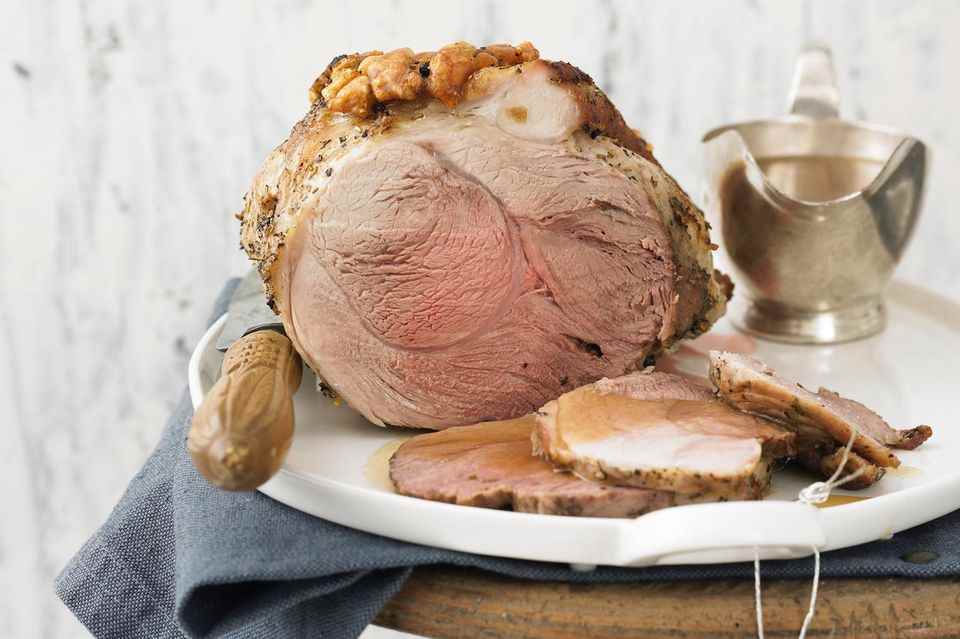
© Thomas Neckermann
The most important thing with roast pork: a crispy crust! This one is a highlight on every buffet. And if there is any roast left over at the end, it also tastes good with bread the next day. To the recipe: roast pork
Rhenish Sauerbraten
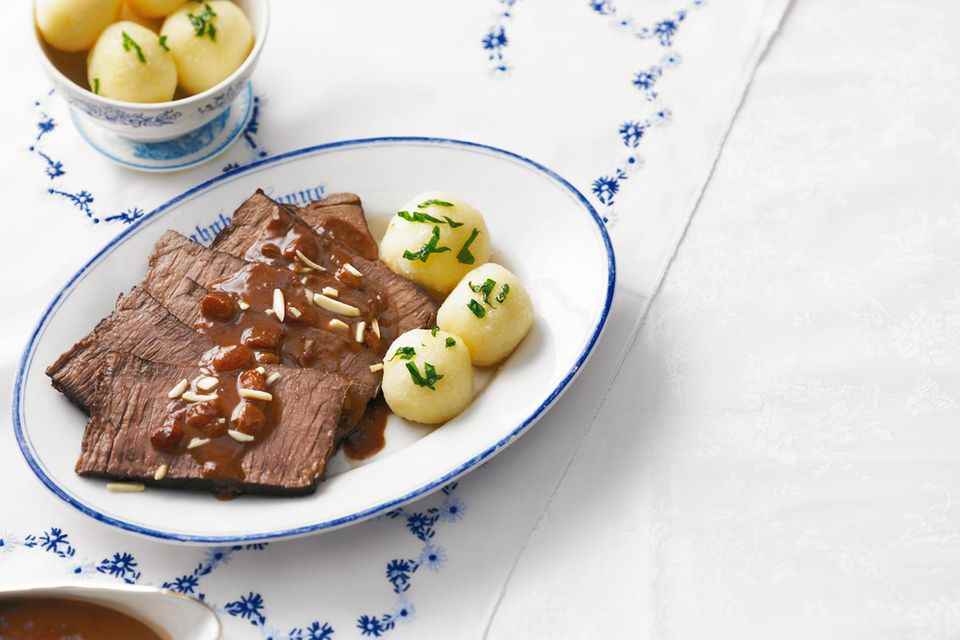
© Thomas Neckermann
This is how relaxed you can enjoy it in the Rhineland: The roast beef bathes in red wine and vinegar for two days and then simmers comfortably in the oven for two hours. To the recipe: Rhenish Sauerbraten
Boeuf a la mode
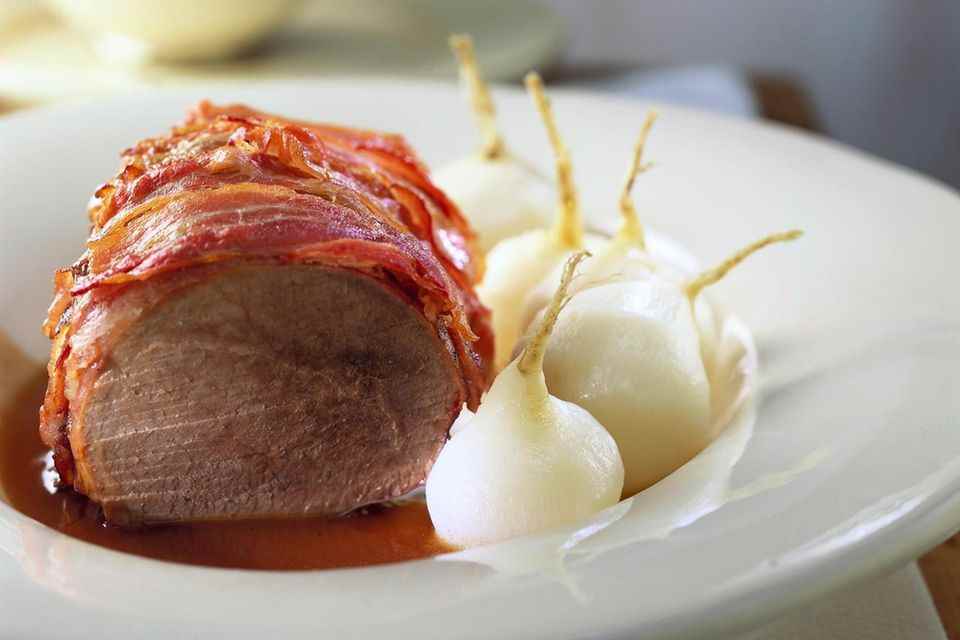
© Thomas Neckermann
The braised beef “Boeuf à la mode” is a classic of French cuisine. Under the name “Böfflamott” it has long since found its way into Bavarian cuisine. To the recipe: Boeuf a la mode
Rolled roast with mushrooms
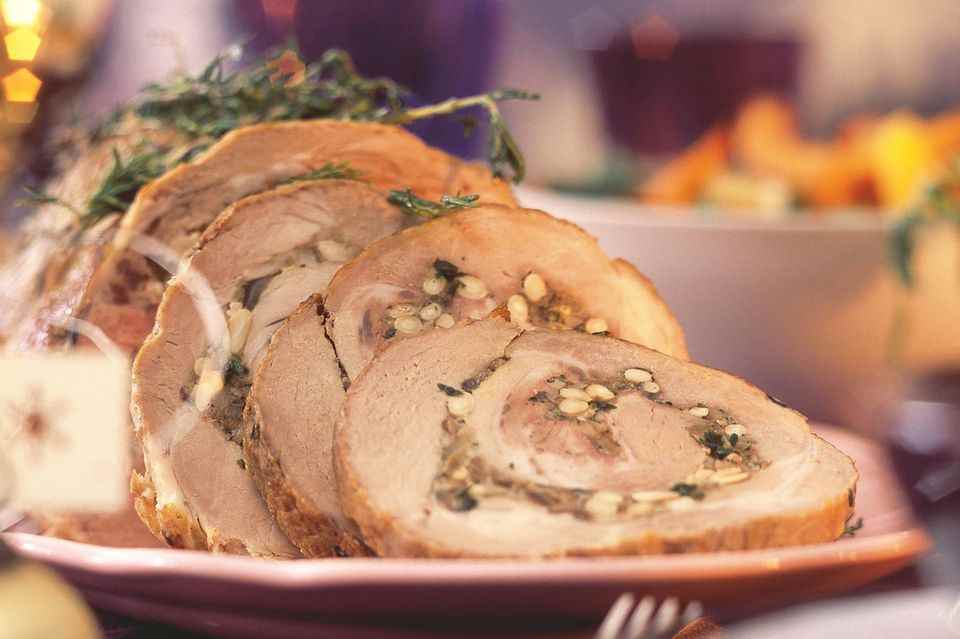
© Jeanette Schaun
This rolled roast tastes particularly good with fresh porcini mushrooms – but unfortunately they are only available in autumn. If you don’t want to do without the roast for the rest of the year, use mushrooms instead. To the recipe: Rolled roast with mushrooms
Braised venison
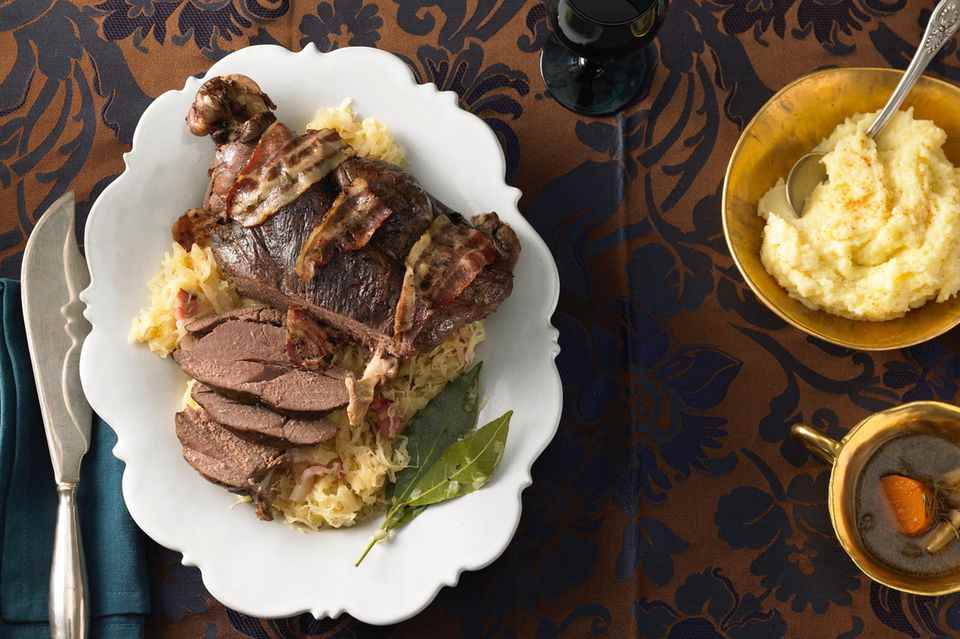
© Thomas Neckermann
Venison is very lean. We have therefore covered our pot roast of deer with bacon so that the meat does not dry out in the oven. Perfect for this: tart rose hip puree. To the recipe: Braised venison
roasted lamb
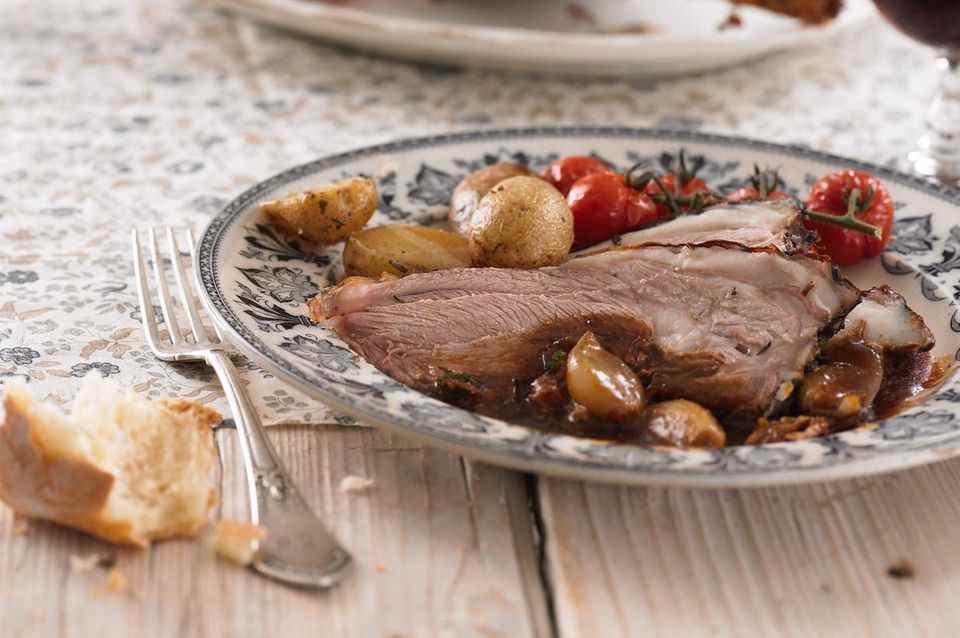
© Thomas Neckermann
This is how roast lamb is brought to the table in Provence: the leg of lamb rests overnight in garlic, honey and lots of herbs – and becomes incomparably delicious. To the recipe: roasted lamb
Roast beef with remoulade sauce
Roast beef is cut from the loin and is one of the finest and most tender parts of the beef. In this recipe we serve it the classic way: with homemade tartar sauce and fried potatoes. To the recipe: Roast beef with remoulade sauce
